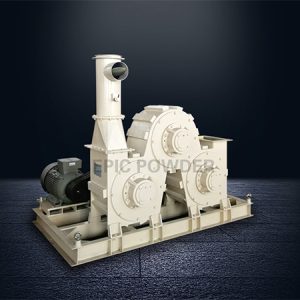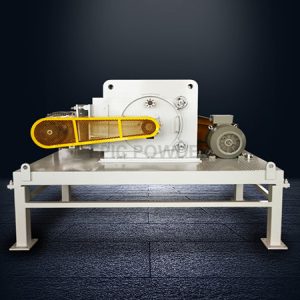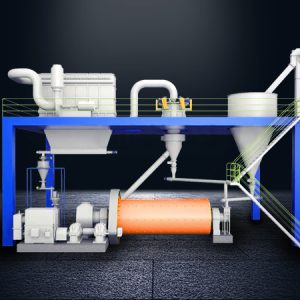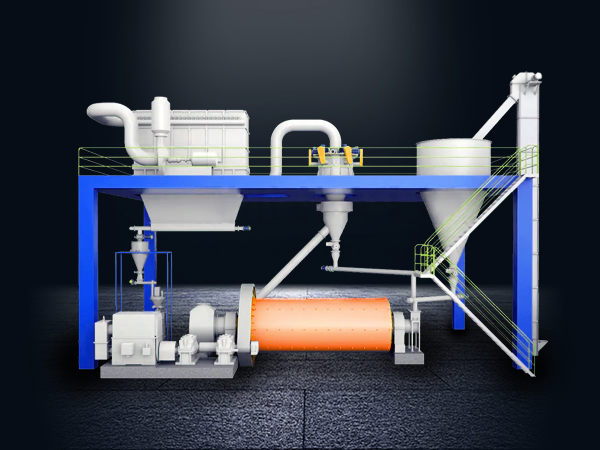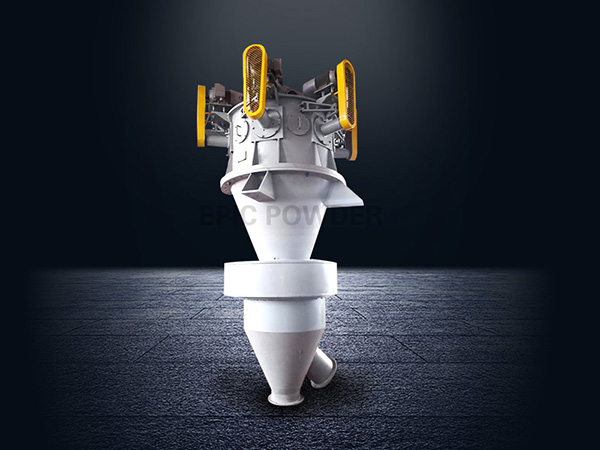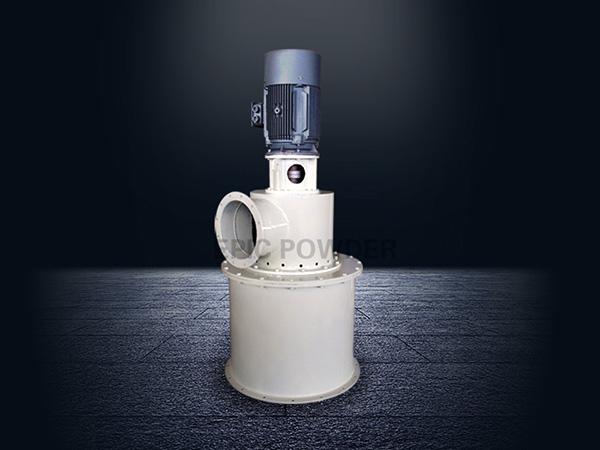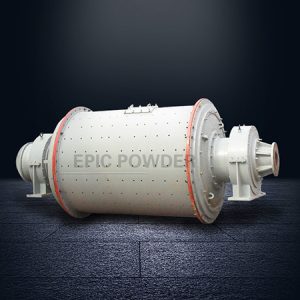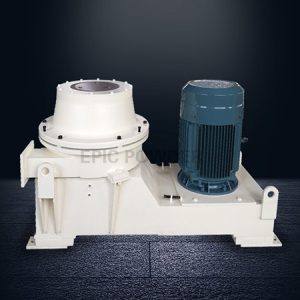What is Ball Mill and Air Classifier Production Line
Ball Mill and Air Classifier Production Line is a system for producing fine particle size products, typically used in the mineral processing industry. The production line consists of ball mills for grinding materials, air classifiers for separating fine particles from coarser ones, and other auxiliary equipment such as dust collectors to ensure product quality. This system is designed to produce consistent particle size distribution that meets specific product requirements and is widely used in various industries including chemical, food, and mineral processing.
Ball Mill and Air Classifier Production Line Advantages
- The ball mill adopts special design and suitable proportion of grinding medium to achieve ideal grinding fineness;
- The slab-type grinding tail discharges, the discharging is smooth, and the cylinder does not need to be cooled;
- The feeding of ball mill is controlled continuously to ensure the stability of feeding and achieve the highest grinding efficiency;
- Through quantitative injection of grinding additives by metering pump, the accurate ratio is ensured, and the grinding efficiency and stability of product performance are improved;
- The silo adopts high quality level indicator to ensure the automatic control of the production process;
- By using different combinations of single or multiple classifiers, products with different fineness can be produced at the same time, or the product specifications can be changed at any time according to the demand, which has greater flexibility;
- The classifier is equipped with speed sensor and control system to measure, evaluate and compensate the air temperature, air pressure, air volume and filter pressure difference, so as to ensure the stability of product quality;
- The conveying system is manufactured according to DIN and ISO standards with high stability;
- The whole line adopts automatic control system to achieve stable load of machine and ensure low energy consumption.
Ball Mill and Air Classifier Production Line Working Principle
After coarse crushing, the material is fed into the ball mill through a controllable feeding device. The grinding medium in the mill repeatedly impacts and grinds the material by virtue of the kinetic energy obtained when the mill rotates. The crushed material is discharged into the suction tank through the tail of the ball mill, and then transported to the classifier for classification by negative pressure. The qualified fine powder is collected by cyclone collector or dust collector, The coarse particles after classification are discharged from the lower end of the classifier, and then re-enter the ball mill for crushing through the feeding pipe.
Layout of Ball Mill and Air Classifier Production Line
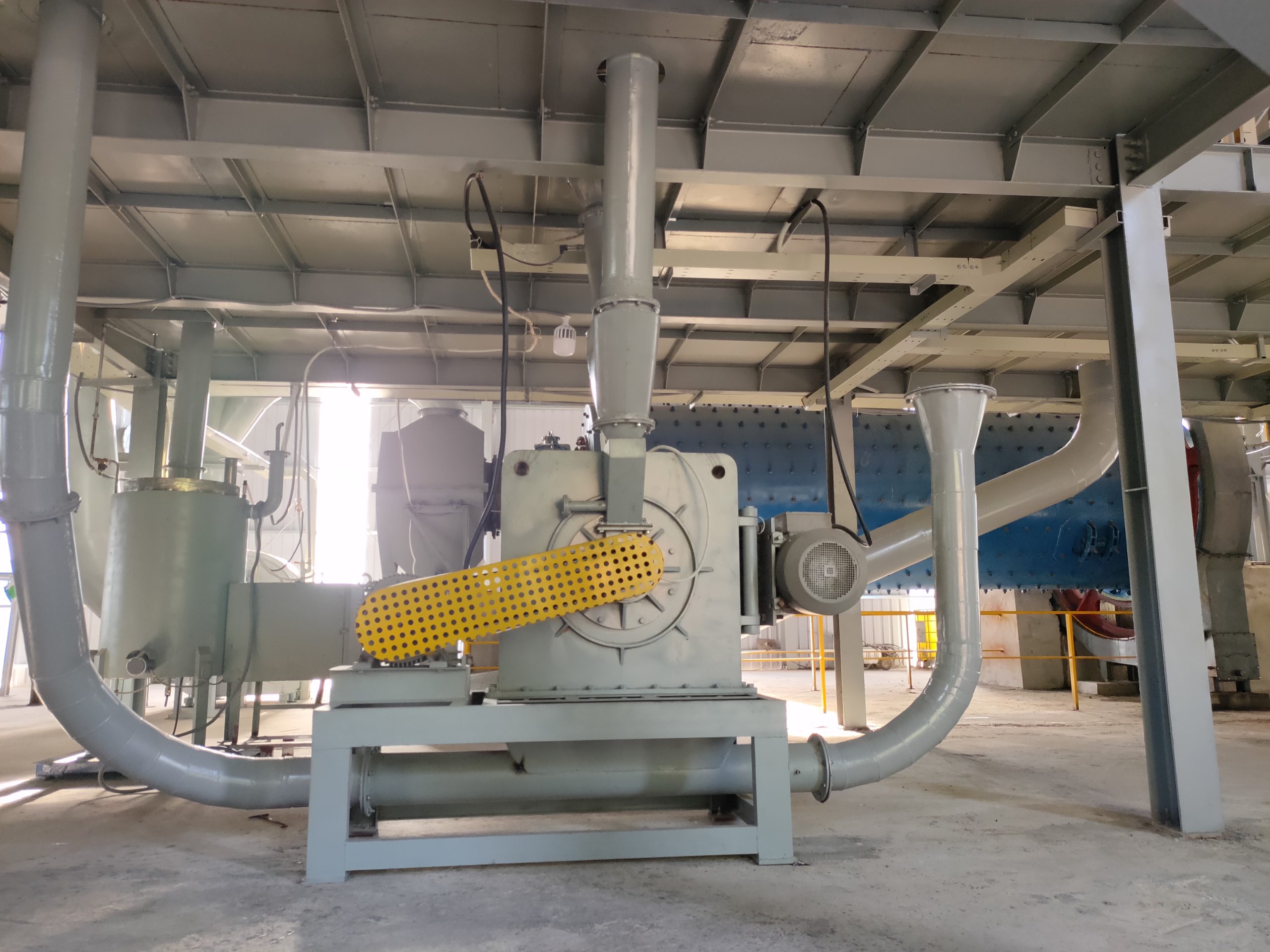
Technical parameters of ball mill grinding and classifying production line
| Parameter / Model | 1860 | 2450 | 2470 | 2670 | 3070 |
|---|---|---|---|---|---|
| Ball mill power (kW) | 220 | 320 | 450 | 630 | 800 |
| Classifier model | 1machine FW630/4 | 1machine FW630/6 | 2 machine FW630/4 | 1machine FW630/6 | 2machine FW800/6 |
| Classification power (kW) | 192 | 290 | 384 | 580 | 764 |
| Crushing system power (kW) | 37 | 55 | 65 | 90 | 110 |
| Conveying packaging power (kW) | 11 | 22 | 22 | 30 | 37 |
| Air compressor power (kW) | 18.5 | 30 | 45 | 55 | 90 |
| D97:15μm capacity (t/h) | 2.7 | 4.0 | 5.4 | 8.0 | 11 |
| D97:10μm capacity (t/h) | 2.0 | 3.0 | 4.0 | 6.0 | 8.0 |
| D97:5μm capacity (t/h) | 0.9 | 1.3 | 1.8 | 2.7 | 3.6 |
Technical parameters of ball mill grinding and classifying production line
take quartz as an example
| Parameter / Model | 1860 | 2450 | 2470 | 2670 | 3070 |
|---|---|---|---|---|---|
| Ball mill power (kW) | 220 | 320 | 450 | 630 | 800 |
| Classifier model | 1machine FW630/4 | 1machine FW630/6 | 2 machine FW630/4 | 1machine FW630/6 | 2machine FW800/6 |
| Classification power (kW) | 192 | 290 | 384 | 580 | 764 |
| Crushing system power (kW) | 37 | 55 | 65 | 90 | 110 |
| Conveying packaging power (kW) | 11 | 22 | 22 | 30 | 37 |
| Air compressor power (kW) | 18.5 | 30 | 45 | 55 | 90 |
| D97:15μm capacity (t/h) | 2.7 | 4.0 | 5.4 | 8.0 | 11 |
| D97:10μm capacity (t/h) | 2.0 | 3.0 | 4.0 | 6.0 | 8.0 |
| D97:5μm capacity (t/h) | 0.9 | 1.3 | 1.8 | 2.7 | 3.6 |
